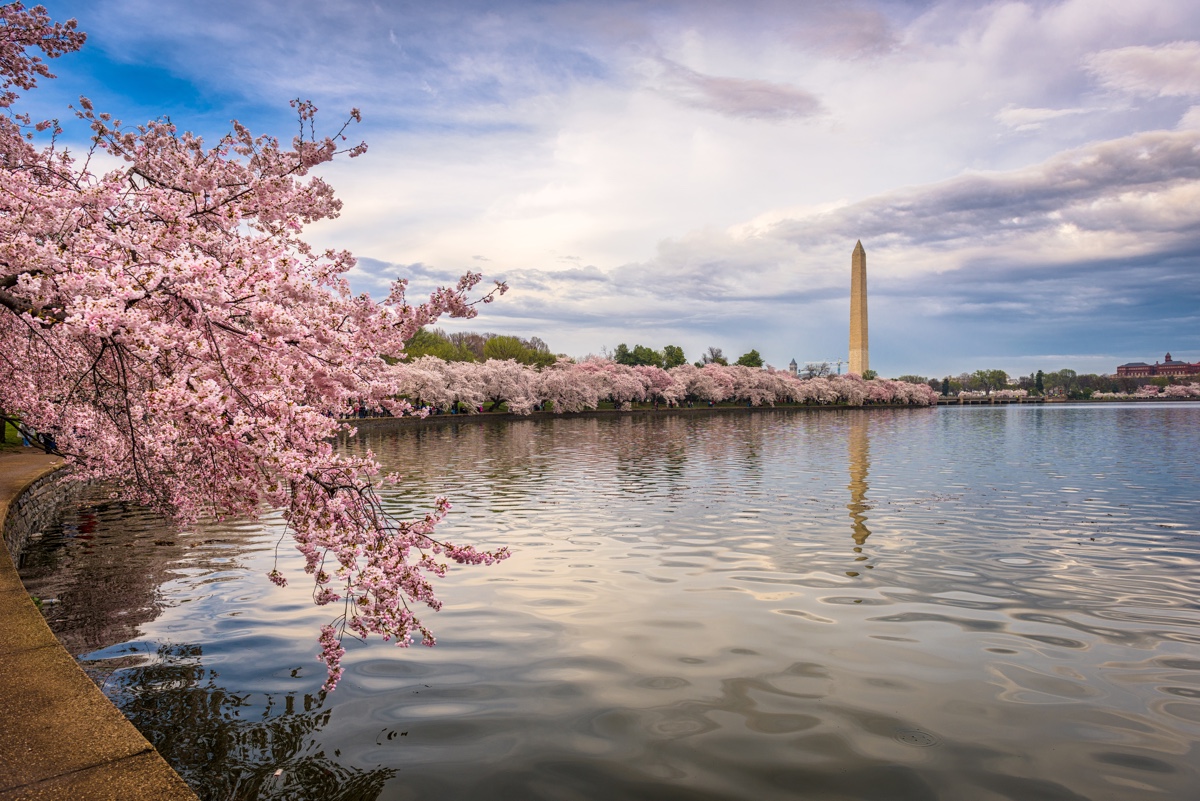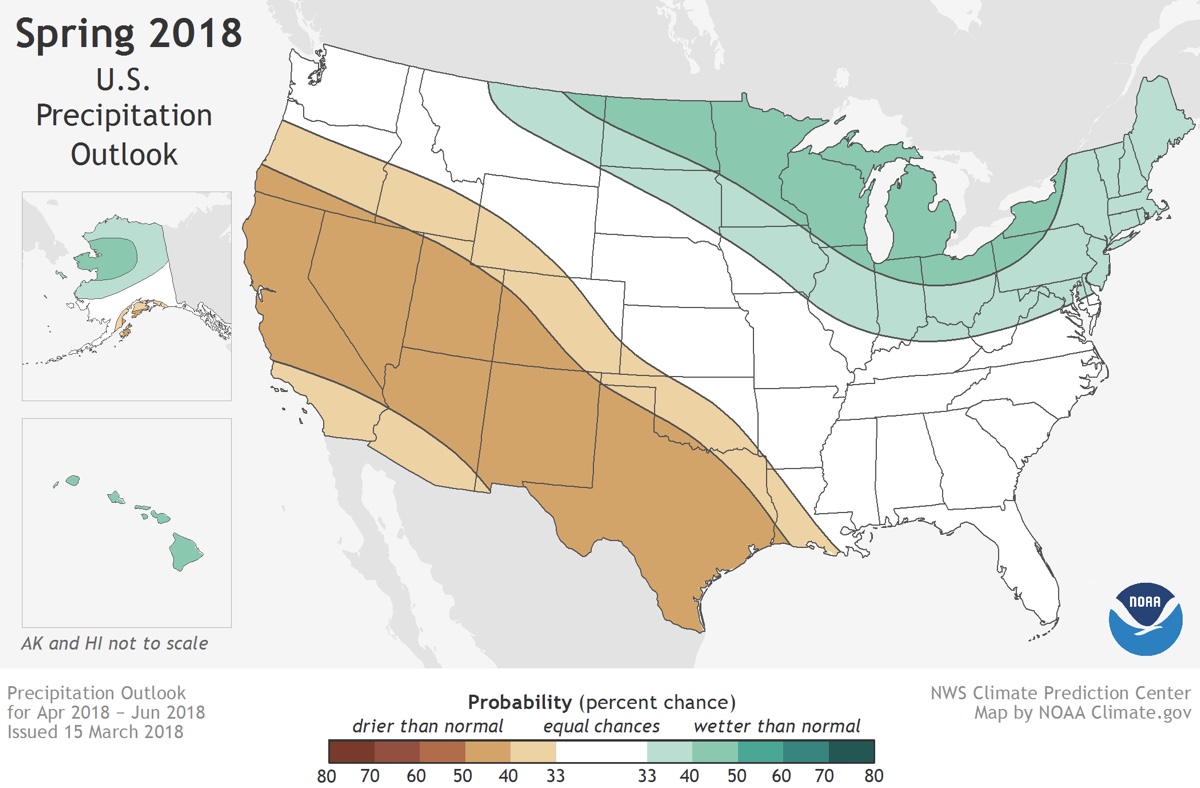Expect a Warm, Wet Spring Across the US

Spring is likely to bring weather that's warmer and wetter than usual to much of the U.S., especially in the mid-Atlantic region and the Northeast, according to the National Oceanic and Atmospheric Administration (NOAA).
However, areas plagued by recent drought — such as California, Oregon, southern Alaska and much of the Southwest — will see little relief, NOAA scientists reported during a teleconference March 15. In that broadcast, the agency shared its U.S. Spring Outlook for 2018, for the months of April through June.
What are the various weather conditions — and hazards — that the U.S. can expect as spring approaches? [The Four Seasons | What Causes Seasons?]
Widespread above-average temperatures are anticipated across two-thirds of the southern U.S. — from California into the Northeast — and the northern Rockies are shaping up to be the only region with below-average temperatures. Meanwhile, Texas and the Gulf Coast are the areas most likely to experience warmer-than-average weather, the scientists reported.
Much of the northern U.S. can expect spring to be not only warmer but also wetter than average, from the Northeast coast to the Ohio Valley and Great Lakes region. But the South and West will have less moisture than usual, which could worsen drought conditions in some areas. Currently, over 25 percent of the U.S. is experiencing drought. And lower-than-average rainfall — combined with warmer temperatures —means that drought is likely to persist and even worsen in Southern California, the Southwest, parts of the Southeast and the High Plains, according to the report.
However, the likelihood of more rainfall in the lower Missouri Valley and the Northern Plains should somewhat alleviate those areas' current drought, NOAA researchers said.
The wetter conditions will also bring flooding to regions that have already undergone record floods due to heavy winter rainfall, such as the lower Great Lakes region, the Ohio River Valley and parts of the Mississippi Valley.
Get the world’s most fascinating discoveries delivered straight to your inbox.
Original article on Live Science.

Mindy Weisberger is a science journalist and author of "Rise of the Zombie Bugs: The Surprising Science of Parasitic Mind-Control" (Hopkins Press). She formerly edited for Scholastic and was a channel editor and senior writer for Live Science. She has reported on general science, covering climate change, paleontology, biology and space. Mindy studied film at Columbia University; prior to LS, she produced, wrote and directed media for the American Museum of Natural History in NYC. Her videos about dinosaurs, astrophysics, biodiversity and evolution appear in museums and science centers worldwide, earning awards such as the CINE Golden Eagle and the Communicator Award of Excellence. Her writing has also appeared in Scientific American, The Washington Post, How It Works Magazine and CNN.




